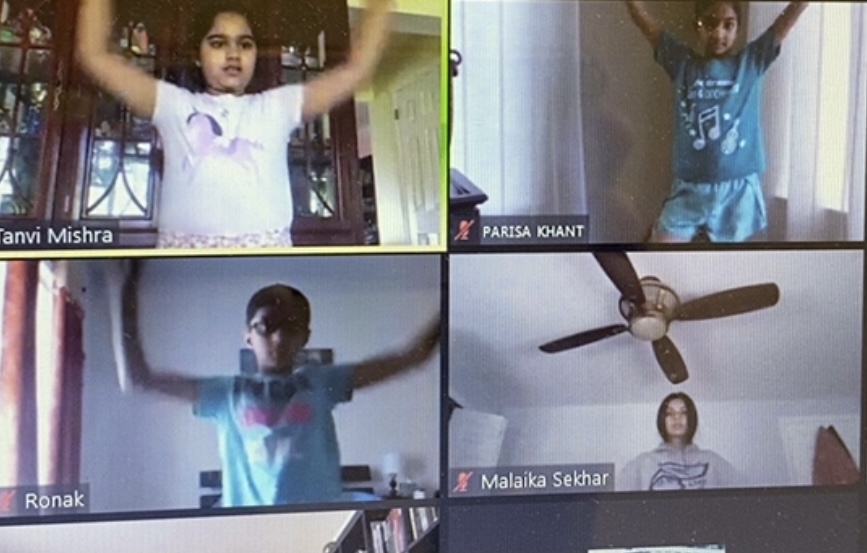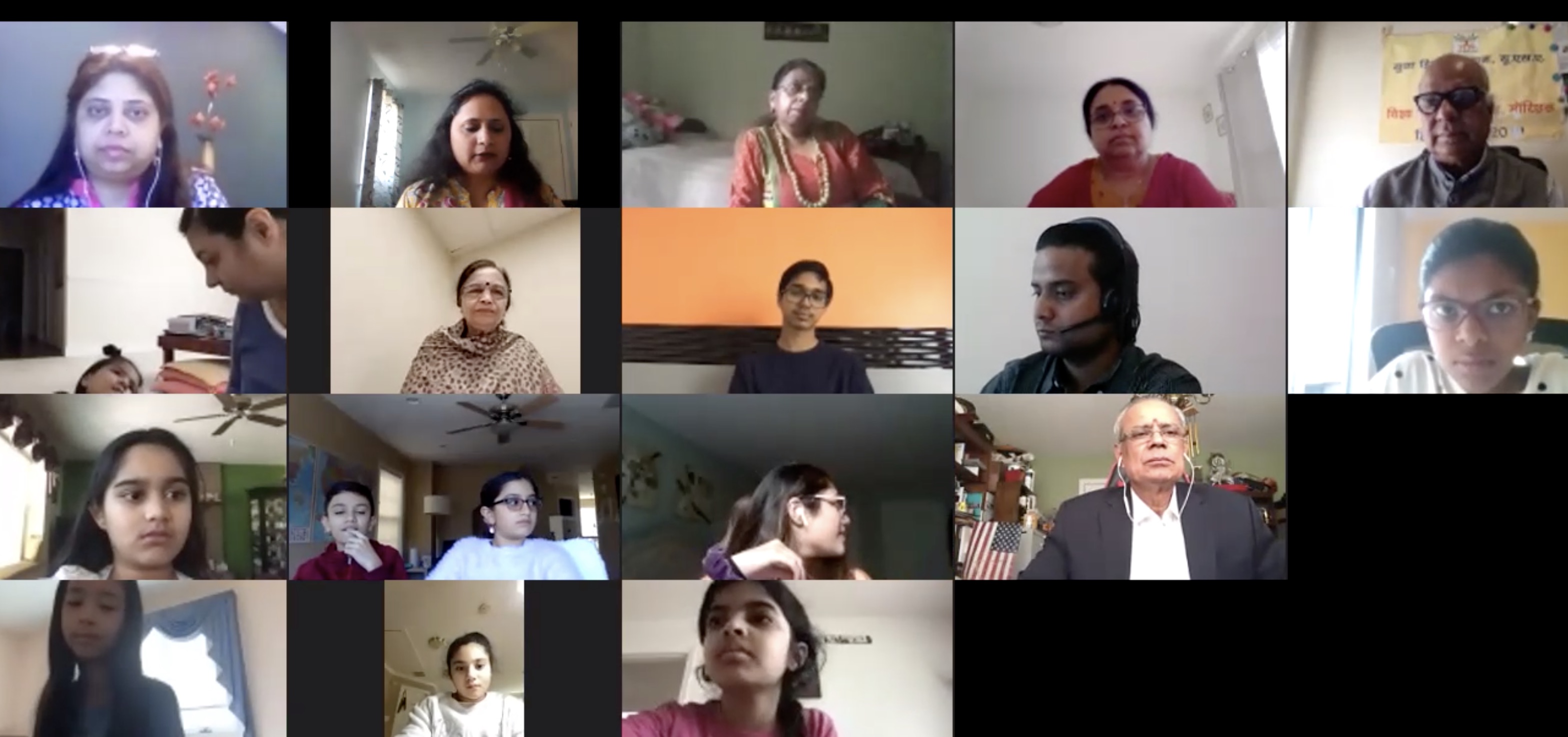


Community-Based Heritage Language Schools (CBHL)
Languages:
Hindi
Independent non-profit school
YUVA HINDI SANSTHAN ONLINE HINDI PROGRAM
Edison, New Jersey 08817
YHS ONLINE HINDI LANGUAGE AND CULTURE PROGRAM Institute Background
Yuva Hindi Sansthan conducts online classroom sessions for teaching Hindi to K-12 (Early Elementary (K-2); Elementary (Gr. 3-5); Middle ( Gr. 6-8); and High (Gr. 9-12) School students. We use synchronous and asynchronous learning materials that is transmitted through online tools, such as, Zoom videos, Google Classroom, Ideaboardz and more.
WHAT STUDENTS LEARN?: Speaking, Reading and Writing about places, people and culture of India; India's Geography, History, Social Traditions and Festivals. Students explore, interpret and analyze culturally authentic Indian products, practices, and perspectives (Interpretive). They discuss and debate (Interpersonal); present and critique (Presentational) and communicate with classmates to participate in games, songs, dances, skits, and maps based activities. We celebrate Hindi Diwas-, Diwali and other festivals.
- Access
- Excellence
Improve Access for all learners in more languages
Percentage of types Students
Heritage Language Learners 80%
Multilingual Learners 5%
Learners who speak a language that is linguistically related to the target language %
Learners who speak a language that is culturally (but not linguistically) related to the target language %
Types of language learners are enrolled
- Heritage language learners (second generation or more)
- English Language Learners
Programs available in your school
- Classes with age-appropriate instruction for different age groups
How do the programs identified above meet the needs of learners of different ages in your school
We select topics with age and grade appropriate texts, audio and video clips for use as material.
What additional activities do you implement at your school to attract and maintain enrollment of students in different groups
We engage learners in varieties of art, culture and theatrical activities.
Main reasons students attend your school
- To connect with their heritage in a meaningful way
- To gain literacy in the language, in addition to oral communication skills
- To communicate with relatives in the home country
- To communicate with relatives or others in the language community in the U.S.
- To learn and use a language that is not offered in high school
- To earn credits for high school or university studies in the U.S.
Do you offer different pathways of study and engagement to align with the interests and goals of the learners in your school?
We evaluate using various means, such as, AAPPL tests, homegrown activities and more.
How does your school strive to provide incentives for students to enroll in the language programs?
- Community and/or parent outreach
- Community functions (e.g. culture events, clubs, etc.)
Percent of the students attend your school remotely
Students who live in same area...........75 %
Students who live in different area...........25%
Different types of classes meet the needs of students
We ask applicants to answer questions about their needs for language learning as well as their expectations and their goals.
Types of instructional formats your school offer
- Online synchronous
How the instructional formats available at your school enable learners from different geographical areas and other distance-related constraints to receive instruction
We use online tools that allows students from different time zone to enroll.
Please describe other ways in which your school excels with respect to this factor.
We invite parents to attend end of program events so they can witness their children perform.
What are the main sources of financial support for your school
- Private donations from individuals
Does your school offer financial assistance to students?
No
How important is the impact of the financial assistance on student enrollment at your school
4
Which of these common competing commitments faced by the learners most negatively impact student enrollment and/or attendance
Name
After-school activities in the mainstream schoo
Homework and other academic pursuits
Extra-curricular activities (sports, music, hobbies)
Religious obligations
Family obligations
Work
Field name
Attendance
No
Yes
Yes
No
No
No
No
Enrollment
No
Yes
Yes
No
No
No
No
How has your school been able to accommodate your students’ competing commitments so that they can attend your school?
We allow them fulfill their commitments at their school or with family.
How has your school been able to accommodate your students’ competing commitments so that they can attend your school?
We allow them fulfill their commitments at their school or with family.
Does your school provide information to parents and other stakeholders about essential school information?
Yes
What are the most effective communications methods with parents and stakeholders?
Communicating by phone/email.
What aspects of these methods or strategies for reaching out to parents create effective means of sharing information?
Emails
Does your school communicate with the community at large about events and other information?
Yes
Please describe any educational and cultural activities, seasonal events, as well as other programs and opportunities that your school makes available to the community at large.
We organize national festivals or reunions.
We organize reunion events after the program is over.
How do these activities create linkages to your community of students, teachers, stakeholders?
Parents and other adults familiarize themselves about our program by attending our festivals.
List the percentage of students by age group
PreK-K students %
Kindergarten students 20 %
Elementary school students 30 %
Middle school students (grades 6-8) 30 %
High school students (grades 9-12) 20 %
Excellence through transparency and accountability
Curriculum and instruction
- Curriculum and instruction that build on the linguistic skills and cultural knowledge that learners bring to the classroom
Outcomes
- A focus on measuring and supporting learning through the strategic use of data on learner performance (including but not limited to standardized U.S. tests and tests from the homeland)
Professional Development
- Recruitment of skilled educators and other personnel
- Provision of ongoing professional development for educators and other personnel
- Regular faculty meetings and opportunities to work in professional clusters
Vision, Strategic Planning, and Priorities
- A publicized vision statement and strategic plan to assemble the human, institutional, and financial resources of the school that support the goals of the school
Transparency, Accountability, and Outreach
- Professional and consistent engagement with the HL community and the larger community to recruit students and teachers and motivate parents and stakeholders to support and advance the aims of the CBHLS
Institution Information
Year School was Established
2010
Languages taught at your school
Hindi
Average Number of Students
30
Average Number of Teachers
5
Saturday or Sunday Classes
Number of weeks per year: 3
Number of hours per week: 10
